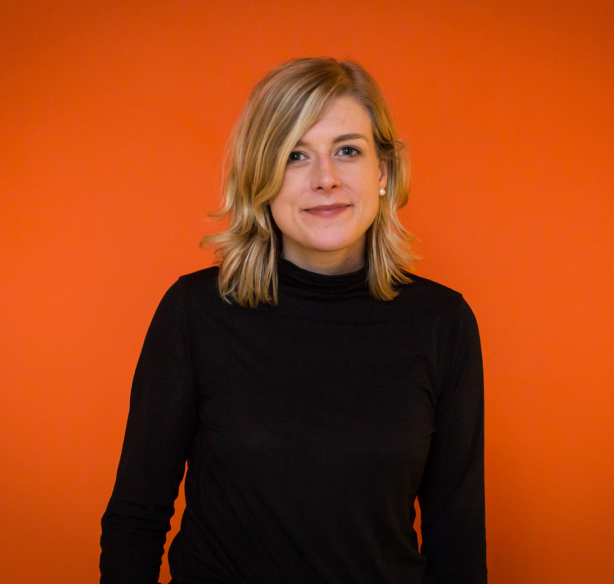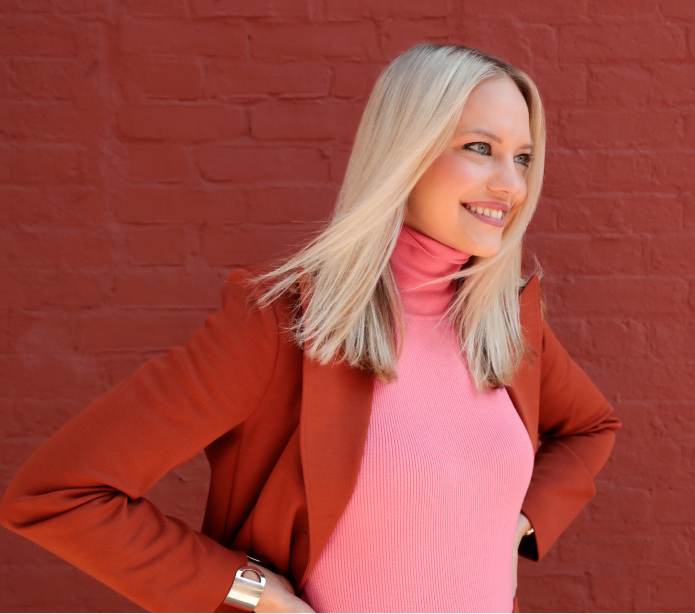Not all designers cultivate a love of design early, go to art school, and then jump into the discipline straightaway after graduation. Many current designers started out in different fields and took surprising paths. In many cases, these past experiences bring a fresh perspective to their work and approach.
We talked to a number of designers to understand how they got into their design careers, what made their path unconventional, and what advice they have for budding designers who might not have opted for design school. Read on below to get their insight on how to become a designer.
Passion Can Lead to a Design Career
Tamara Olson previously led a UX design team at Google and now runs her boutique design and development studio called Studio Simpatico. Her design path was a bit unconventional because she first built up technical skills simply because she was interested. Luckily, they ended up being essential in her design career. She tells us, “In middle school, I was obsessed with making websites — first using templates on sites like Angelfire and Geocities, but then diving into the HTML and CSS code so I could have more control. As I began developing websites professionally, I wanted to make them look more visually appealing — this led me to design.” Having this technical foundation early in her life set her up for success as a professional. Starting with passion is always a good sign and can make learning effortless, as it may be easier to get into a state of “flow.”
Great Design Careers Can Start in Many Different Places
Kristen Shenk is a designer that previously worked at Nike and PepsiCo, and more recently, founded a creative agency called MLTI NYC. She followed a unique path to design that ended up being quite the asset. Only about 25% of her college coursework focused on design. The rest was multidisciplinary, including classes in art and media. In order to further her interests, she tells us: “I identified the graphic design professors, built relationships with them, and took on additional projects outside of the assigned coursework in order to learn more about graphic design under their mentorship.”

Design education doesn’t have to be formal to be impactful. Seeking out leaders in the space and learning from their expertise is a valuable way to gain skills if you want to become a designer.
Tamara takes this idea further and explains that “there are so many types of design. UX design is more about systems thinking and user flows, and doesn’t require the formal visual training that would be expected of a graphic designer or visual designer. I’d spend some time figuring out where your strengths lie.”
Design is a multifaceted discipline. Some designers make apps, others make websites, even others design video games. Figuring out what it is that you’re passionate about and trying it out is the only way to find what really suits you.
Luca Iaconi-Stewart, User Experience Designer at Sallie Mae, organically followed a similar path to the one that Tamara suggested. In his career he has found it important to “draw on a diverse array of previous work — pen and ink drawings, pieces of furniture, installation art, intricate paper models, architecture and photography. The variety of my previous creative experiences allows me to see problems from both logical and aesthetic perspectives and that’s particularly valuable in my current field, UX design.” Bringing a wide variety of experience and interests is especially helpful for anyone who wants to become a designer.
Sometimes a Design Career Finds You
Svetlana Bodnia, a graphic designer at GKA, a creative agency, looked for architecture work after graduating during a down economy. Her foray into graphic design began when she was asked to design a corporate poster for a friend. After that, she tells us, “I started receiving more and more requests as a freelancer until I received a full-time job as a Graphic Designer. In the end, graphic design is more attractive to me because of its wider opportunities for self-expression and faster turnover of projects.” Easing into graphic design was a great move for Svetlana at the time and is advisable for anyone who wants to become a designer, but isn’t quite sure where to start.

Practices Make Perfect in Design
There is always something new to learn in design. Maybe a new tool, a new technique, or a new theory. The learning process never ends, and, as the saying goes, “you’re only as good as your last project.” So designers need to keep practicing to perfect their craft and build up an effective design portfolio while they’re at it. This is one piece of advice that we heard from each and every person we surveyed.
Svetlana reminds designers that practice never goes out of style. “No matter what level you are already at – practice. The theory is needed – it will bring you a little closer to the dream, but you need to support your knowledge with experience. To do this, take the time to experiment, learn by trial and error. Practice will help you develop taste, gain speed, and expand your arsenal of tools.”
Tamara echoes Svtelana’s focus on practice to become a great designer. She suggests to designers: “practice your craft as much as you possibly can and scour the web for online resources. There are endless free resources, tutorials, and templates. There’s no other way to get better. Even with formally trained designers, I truly believe a rich understanding of craft is born through hours of observation and focused practice, not in the classroom.”
Kristen found college to be a great time to build the foundation for her design career. But ultimately, she tells us, “I learned the most about design, process, and cultivating an aesthetic post-collegiately within a professional context while designing and art directing at Nike.”
Design skills can (and should!) be honed anywhere and everywhere. From a boot camp classroom to a college mentor’s office. However unconventional they might seem, there is no limit to the creativity designers can generate when they are open to learning experiences.
Approach Design Education from More than One Angle
Luca offers inspiration to anyone who wants to become a designer, “If there’s something design-related that you’re good at, spend time practicing it! The world will notice, and that can help you get a foot in the door. I did attend a boot camp to get into UX, but I leaned heavily on all the informal design work throughout my life, and I think my current employer saw and responded positively to that passion.”

Boot camps come in all shapes and sizes. They can be for various durations and have different payment methods, like upfront or income-based, once alumni are hired in their new field. But any class worth its price tag offers a deep dive into an element of design, intending to teach students skills that are in high demand. And after the course is over, it’s time to get more real-world experience and refine everything you’ve learned.
Find Design Mentors and Idols
The first several design projects you complete in your first job might not reach the level you had hoped for. (Don’t worry! This is often a great learning experience.) That’s where experienced designers come in. Kristen thinks that anyone who wants to become a designer should “Look to great designers and study what makes their work great. Fill your visual library with outstanding design case studies. The combination of relentless practice and filling your visual library will close the gap between where your skillset is and where you want it to be.”
Designers need a strong community to fuel them. That could include peers from around the world that you share passion projects with on Dribbble or senior design leaders from your organization that have time to take you under their wing. If you want to become a designer, it’s time to get creative and learn new skills and styles wherever you can. Then you’ll need to practice as much as possible to hone your style over time.
What path did you follow to become a designer? Let us know by tweeting us @Protoio.
Proto.io lets anyone build mobile app prototypes that feel real. No coding or design skills required. Bring your ideas to life quickly! Sign up for a free 15-day trial of Proto.io today and get started on your next mobile app design.






